
How to Use SparkFun Simultaneous RFID Reader - M6E Nano: Examples, Pinouts, and Specs
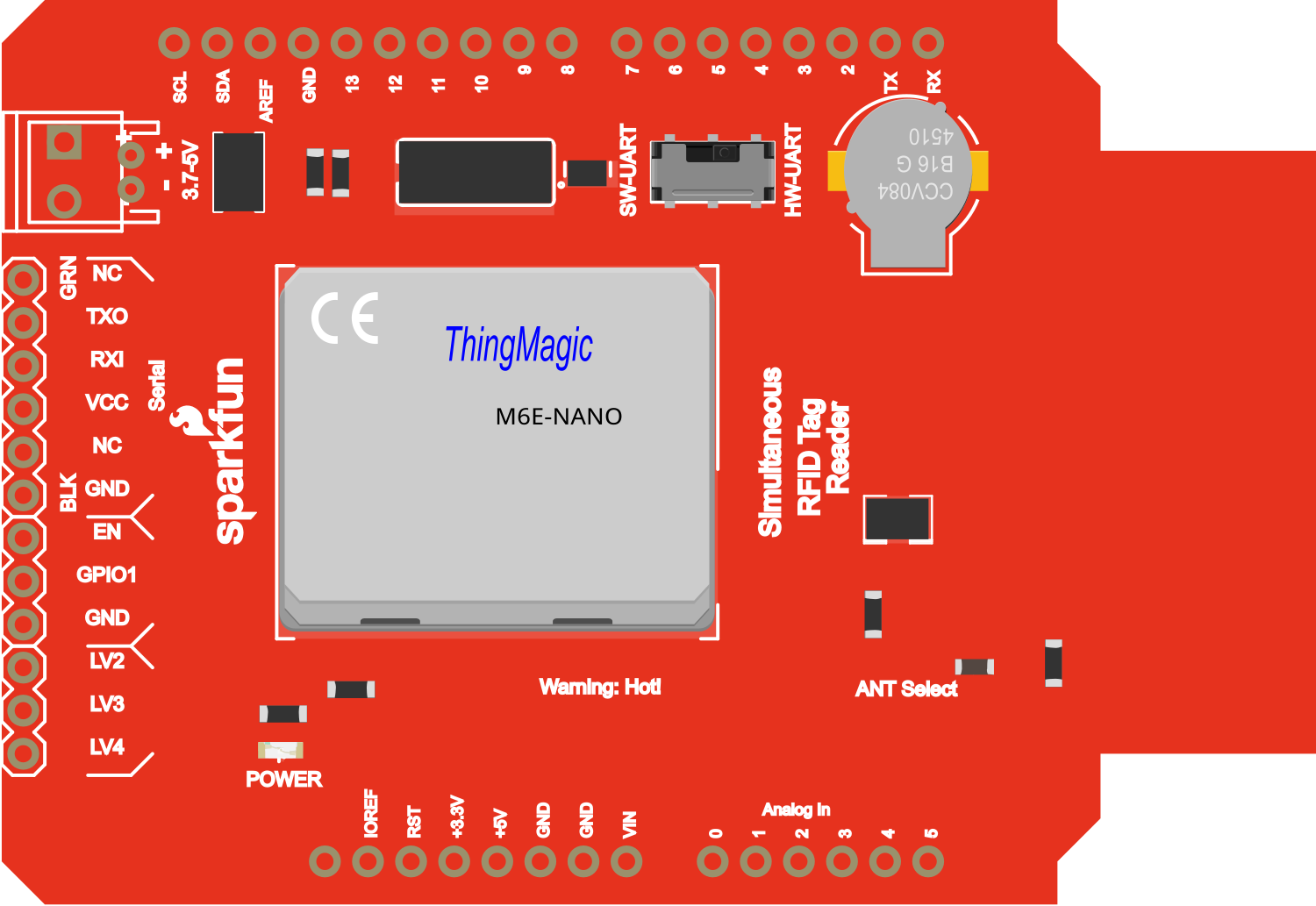
 Design with SparkFun Simultaneous RFID Reader - M6E Nano in Cirkit Designer
Design with SparkFun Simultaneous RFID Reader - M6E Nano in Cirkit DesignerIntroduction
The SparkFun Simultaneous RFID Reader - M6E Nano is a versatile and powerful ultra-high frequency (UHF) RFID reader module capable of reading multiple RFID tags concurrently. Utilizing the M6E Nano module, this reader operates in the 860 to 960 MHz UHF RFID frequency range, which is suitable for a wide range of applications including inventory management, asset tracking, and access control systems. Its compact form factor and SPI interface make it an excellent choice for embedding into electronics projects, particularly those requiring efficient and high-volume tag reading.
Explore Projects Built with SparkFun Simultaneous RFID Reader - M6E Nano
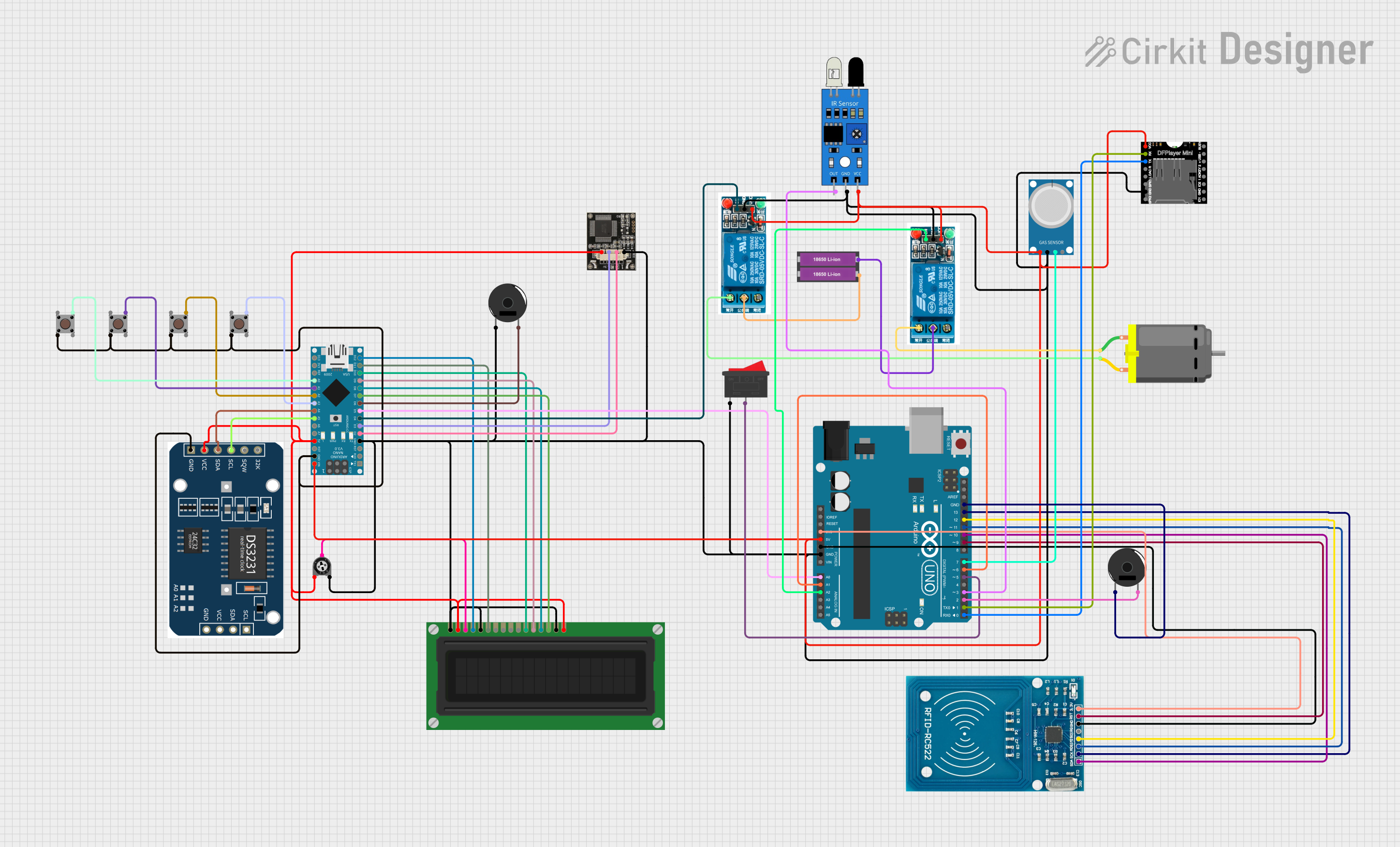
 Open Project in Cirkit Designer
Open Project in Cirkit Designer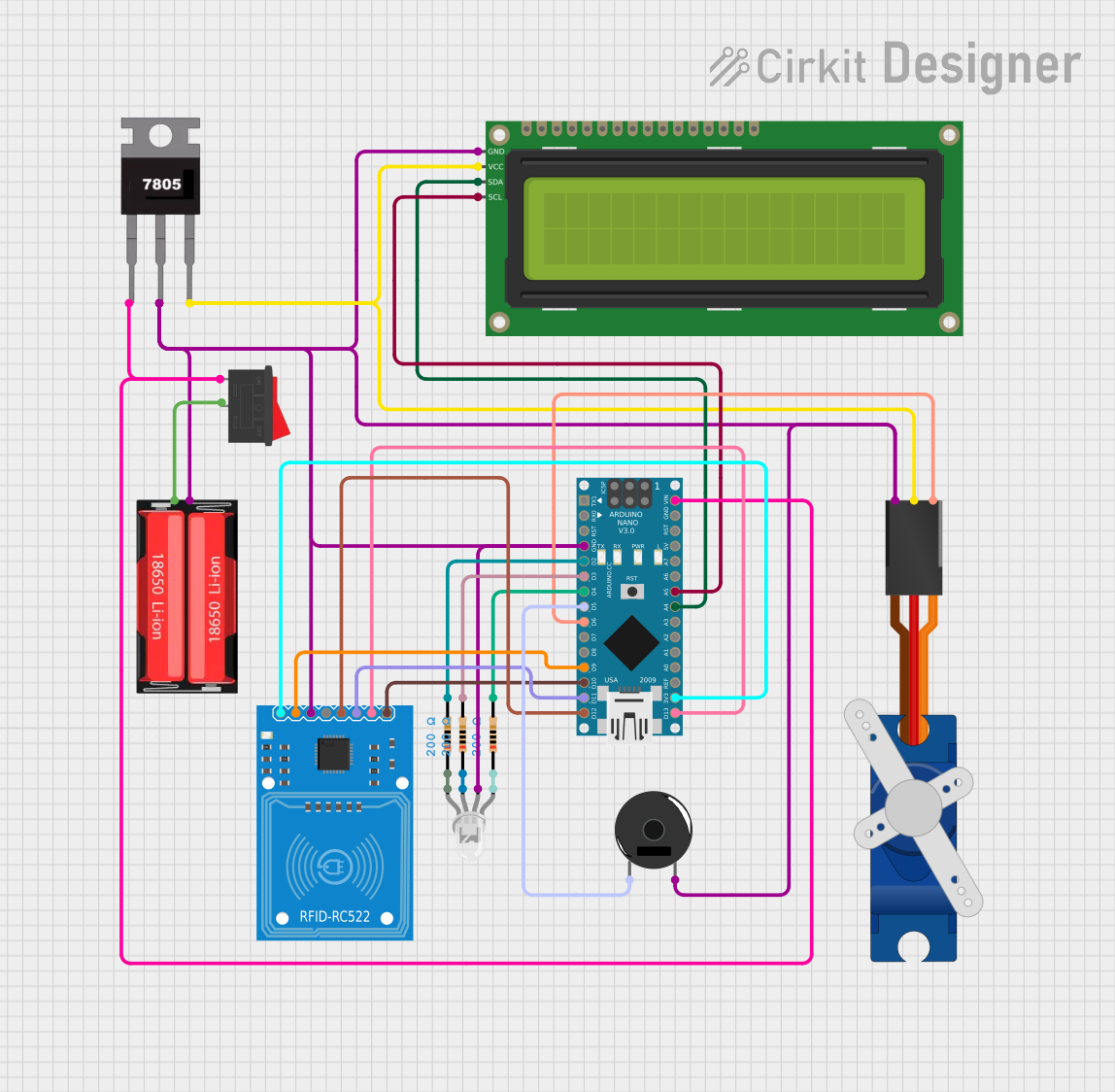
 Open Project in Cirkit Designer
Open Project in Cirkit Designer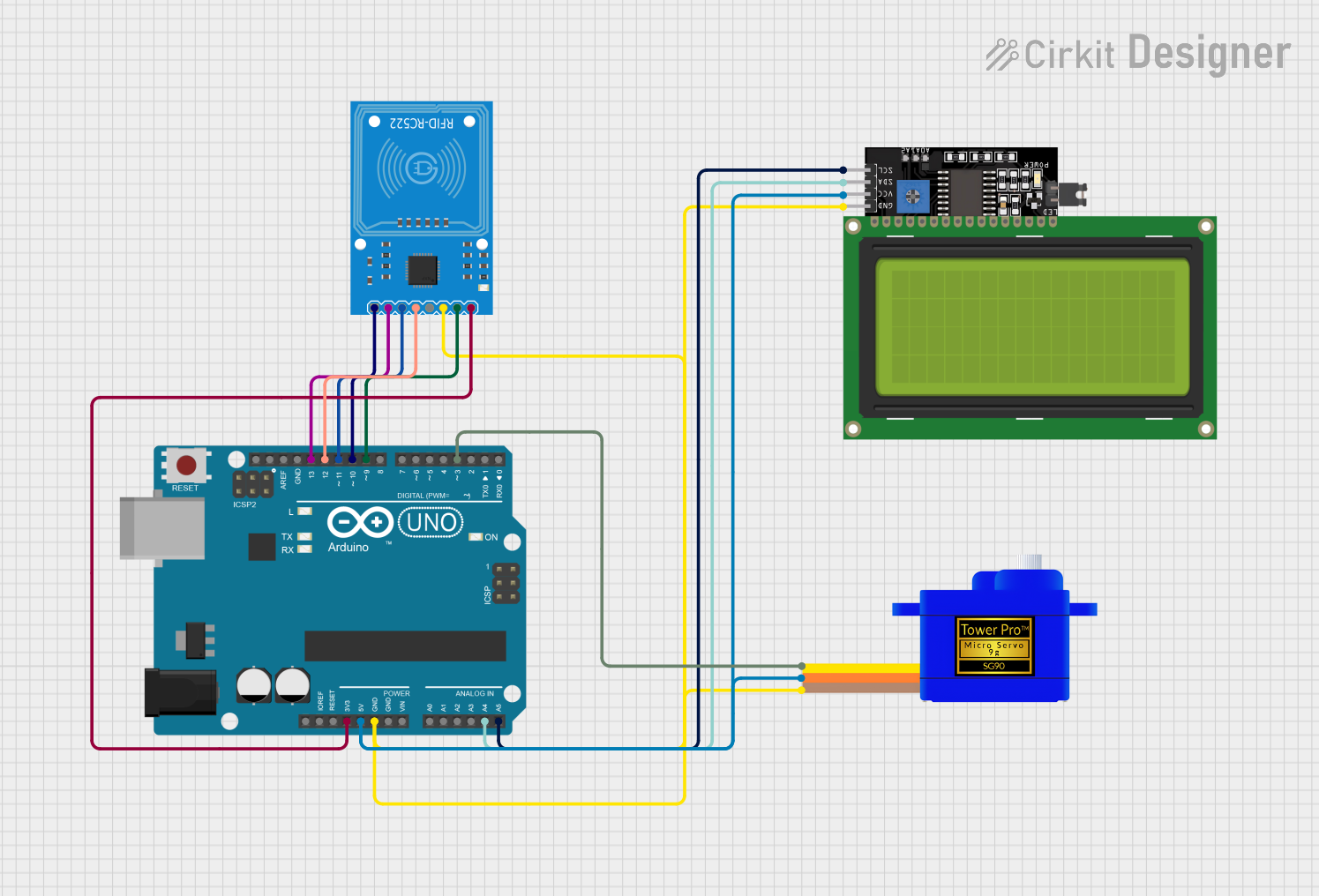
 Open Project in Cirkit Designer
Open Project in Cirkit Designer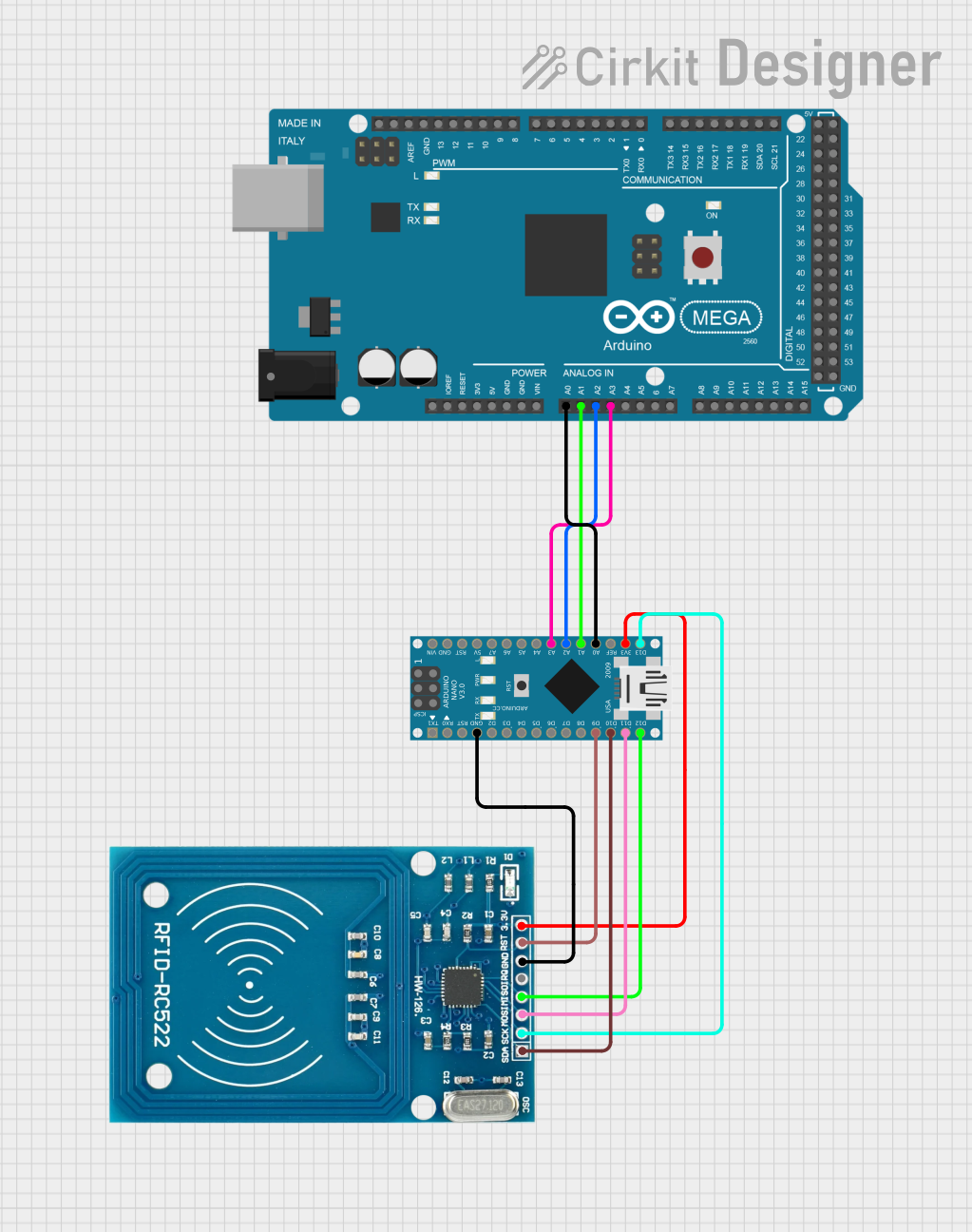
 Open Project in Cirkit Designer
Open Project in Cirkit DesignerExplore Projects Built with SparkFun Simultaneous RFID Reader - M6E Nano

 Open Project in Cirkit Designer
Open Project in Cirkit Designer
 Open Project in Cirkit Designer
Open Project in Cirkit Designer
 Open Project in Cirkit Designer
Open Project in Cirkit Designer
 Open Project in Cirkit Designer
Open Project in Cirkit DesignerCommon Applications and Use Cases
- Inventory and warehouse management
- Asset tracking and management
- Retail and point of sale systems
- Race timing and participant tracking
- Access control and security systems
Technical Specifications
Key Technical Details
- Frequency Range: 860 - 960 MHz (UHF RFID)
- Interface: UART, I2C, SPI (default)
- Read Range: Up to 6 meters (depending on antenna and tag)
- Antenna Connections: U.FL and RP-SMA
- Power Supply: 4.5V - 5.5V DC
- Current Consumption: 80mA average / 1.5A peak (during transmit)
- Supported Protocols: EPCglobal Gen 2 (ISO 18000-6C)
Pin Configuration and Descriptions
| Pin Number | Name | Description |
|---|---|---|
| 1 | GND | Ground connection |
| 2 | VIN | Power supply input (4.5V - 5.5V DC) |
| 3 | EN | Enable pin (active high) |
| 4 | TX | UART transmit (to microcontroller RX) |
| 5 | RX | UART receive (from microcontroller TX) |
| 6 | SCLK | SPI clock |
| 7 | MISO | SPI Master In Slave Out |
| 8 | MOSI | SPI Master Out Slave In |
| 9 | SDA | I2C data |
| 10 | SCL | I2C clock |
| 11 | IRQ | Interrupt request (active high) |
| 12 | GPIO1 | General purpose I/O (configurable) |
Usage Instructions
How to Use the Component in a Circuit
- Power Supply: Connect the VIN pin to a 4.5V - 5.5V DC power source and GND to the ground.
- Interface Selection: By default, the module uses SPI. Connect SCLK, MISO, MOSI, and a GPIO pin for chip select (CS) to your microcontroller.
- Antenna Connection: Attach a suitable UHF antenna to the U.FL or RP-SMA connector.
- Enable the Module: Set the EN pin high to enable the module.
- Communication: Establish communication with the module using the selected interface protocol (UART, I2C, or SPI).
Important Considerations and Best Practices
- Ensure that the power supply is within the specified range and is capable of supplying the peak current required during transmit.
- Use impedance-matched cables and antennas to maximize the read range and performance.
- Place the module away from metal surfaces to avoid interference with the RFID signals.
- Follow local regulations regarding the use of UHF RFID frequencies.
Troubleshooting and FAQs
Common Issues
- Reader not powering up: Check the power supply connections and voltage levels.
- No tags being read: Ensure the antenna is properly connected and the tags are within range and compatible with the UHF frequency.
- Intermittent reading: Verify that the SPI or UART connections are secure and the microcontroller is correctly configured to communicate with the module.
Solutions and Tips for Troubleshooting
- Double-check wiring and solder joints for any loose connections or shorts.
- Use the provided library and example code to test basic functionality before integrating into a larger system.
- Adjust the position and orientation of the antenna to improve tag detection.
FAQs
Q: Can the reader detect tags through materials? A: Yes, but the effectiveness depends on the material. UHF RFID can penetrate materials like paper, plastic, and wood, but has difficulty with metal and liquids.
Q: How many tags can the reader read at once? A: The M6E Nano can read multiple tags in its field; however, the exact number depends on the tags' orientations and environment.
Q: Is the reader compatible with all RFID tags? A: It is compatible with tags that operate in the 860 to 960 MHz range and conform to the EPCglobal Gen 2 (ISO 18000-6C) standard.
Example Code for Arduino UNO
Below is a simple example code snippet for initializing the RFID reader with an Arduino UNO using the SPI interface. Ensure you have the appropriate library installed before uploading the code to the Arduino.
#include <SPI.h>
#include <RFID.h> // Make sure to include the correct library for the M6E Nano
// Define the pins
#define CS_PIN 10
#define RESET_PIN 9
RFID rfid(CS_PIN, RESET_PIN);
void setup() {
Serial.begin(9600);
SPI.begin();
// Attempt to start the RFID reader
if (rfid.begin() == false) {
Serial.println("RFID reader not found. Please check wiring.");
while (1); // Halt the program
}
Serial.println("RFID reader started successfully.");
}
void loop() {
// Code to read RFID tags goes here
}
Remember to consult the library's documentation for detailed functions and additional examples to fully utilize the capabilities of the SparkFun Simultaneous RFID Reader - M6E Nano.